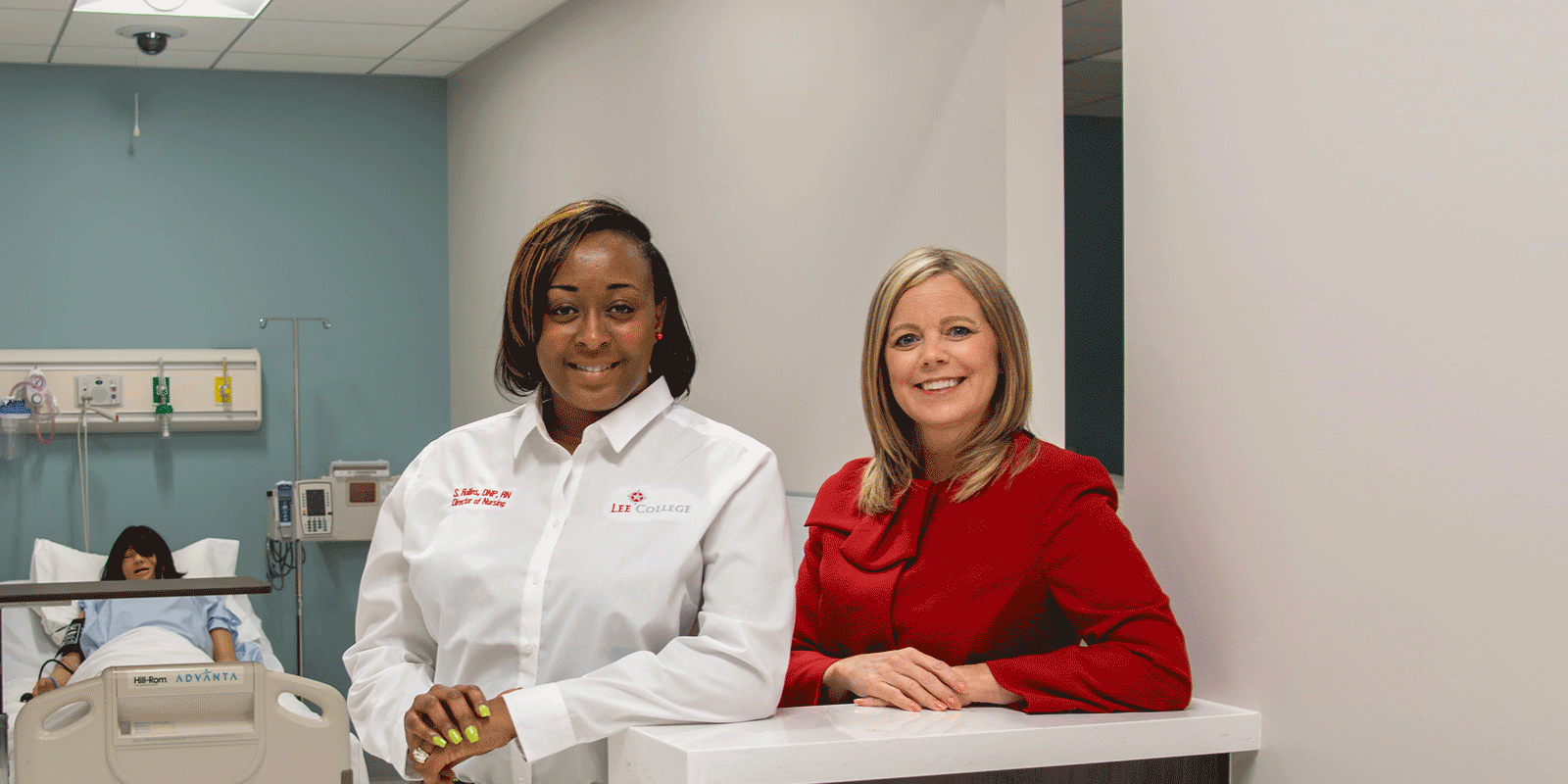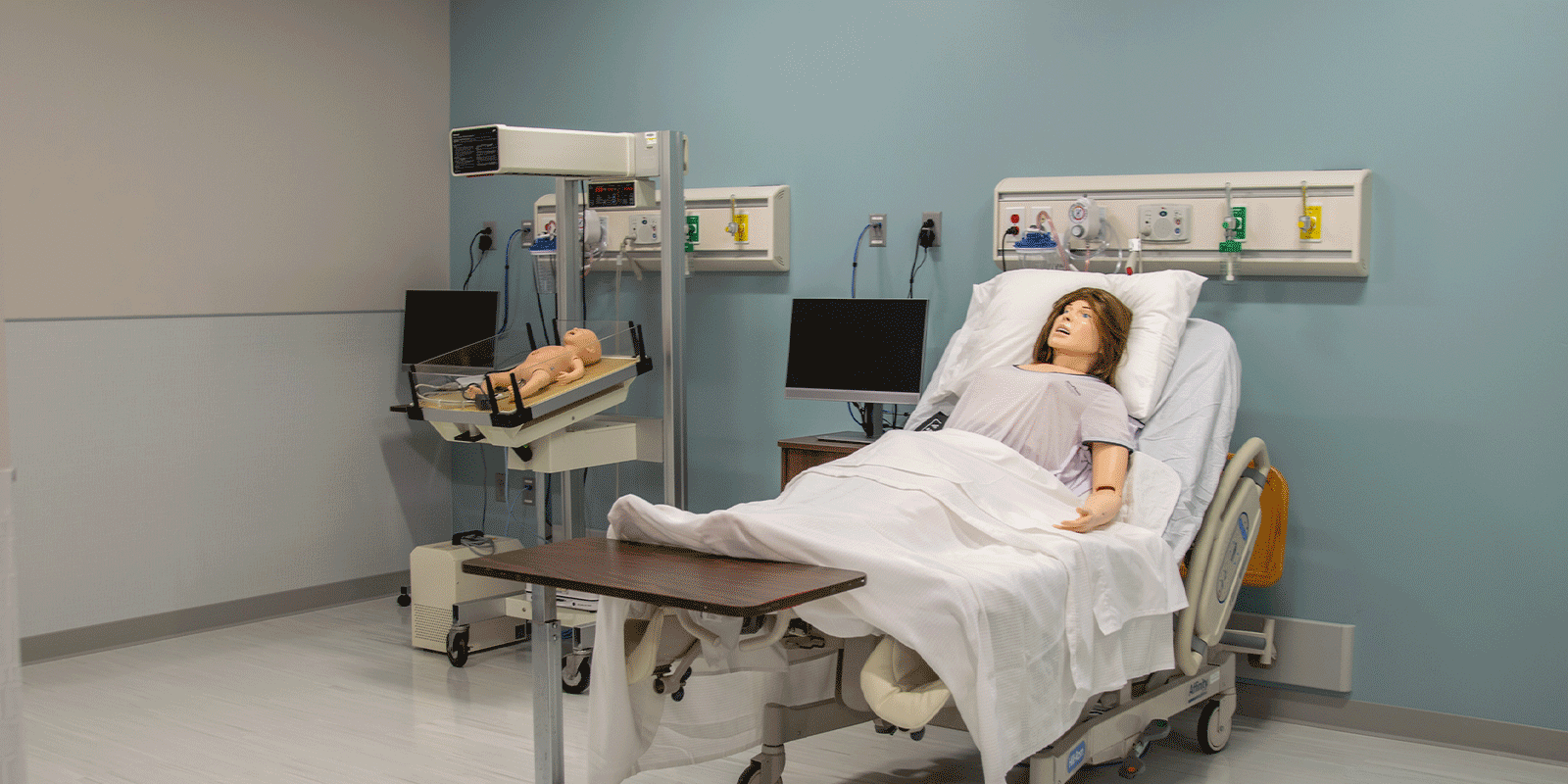State-of-the-Art Expansion Offers Integrated Curriculum, Doubles Student Capacity
For 60 years, Lee College has trained students to become Registered Nurses (RNs) and Licensed Vocational Nurses (LVNs). Starting this fall, the nursing programs will offer a new, state-of-the-art learning experience that aligns with the demands and rigor of the most modern patient care.
"Nursing is much more complex than it was 20 years ago," said Dr. Janena Norris, dean of nursing & allied health. "Nurses have a lot more responsibility at the bedside. Patients are living longer and have multiple underlying conditions, which requires more critical thinking and clinical judgment."
It's that thought process that prompted the college to modernize the program by renovating and expanding the space inside the McNulty-Haddick Nursing Center, as well as overhauling the existing curriculum to make the course work more integrated. The improvements will also accommodate doubling the capacity of nursing students.
"Renewing and updating our nursing program is critical to better serving the needs of our area hospitals, their patients, and our communities," said Dr. Lynda Villanueva, Lee College president. "And as a school located near the largest medical center in the world, it's imperative we create a steady flow of well-educated, highly skilled students ready to succeed in these facilities and in their careers."
Integrating Teaching with Technology
 The enhanced space features three new skills labs with a total of 30 patient beds and a high-fidelity simulation center that houses five rooms: one pediatric room, two adult medical-surgical rooms, one critical care room, and a maternity (mother-baby) suite. These spaces allow for both nursing skills practice and scenario-based, hands-on learning.
The enhanced space features three new skills labs with a total of 30 patient beds and a high-fidelity simulation center that houses five rooms: one pediatric room, two adult medical-surgical rooms, one critical care room, and a maternity (mother-baby) suite. These spaces allow for both nursing skills practice and scenario-based, hands-on learning.
The renovation also allowed for the creation of three larger-capacity classrooms with advanced technology and computer-based testing capability.
"It is our hope that all our spaces collectively will allow for a well-rounded educational experience, so our students can master important nursing skills and concepts in order to be successful on the licensure exam and in practice," Norris added.
Caroline Lucke, a second-year RN student, joined the program during the height of COVID-19 and due to the pandemic, could not get access to the labs. She looks forward to utilizing the new spaces, running through different scenarios with her classmates and receiving guidance from her instructors.
"Being in health care, it's about teamwork and collaborating with people to provide the best care for patients," said Lucke, who has wanted to be a nurse since she was in kindergarten. "That's what excites me about the nursing program and keeps me motivated every day."
In a blocked curriculum content is divided and grouped into "learning pockets." For example, all learning about children would take place in a separate pediatric course and other coursework split in a similar fashion. In an integrated curriculum, the content is merged and presented by concepts across the life span. Instructors teaching students about the respiratory system in an integrated course would discuss both adult and pediatric diseases, the pharmacology used to treat them and any other pertinent information that relates to nursing care.
"The removal of those 'learning pockets' in the curriculum helps to provide a constant learning continuum for our students and assists them in mastering nursing concepts," explained Dr. Sybil Rollins, director of nursing. "The nursing faculty really took the lead on this design and embraced it. We are grateful for their forward thinking and their willingness to complete the hard work to make these changes."
Filling a Gap for Qualified Nurses
According to The U.S. Bureau of Labor Statistics, the demand for RNs will jump to 3.3 million by 2029. That's an increase of 221,900 or 7 percent. The job outlook for LVNs is expected to grow 9 percent through 2030, which translates to an increase of just more than 64,000.
Industry partner Houston Methodist Baytown Hospital is one hospital dealing with challenges in filling nursing positions, especially since the pandemic. Many nurses left to take travel nursing positions to make more money, some retired, and there are those who left the profession after reassessing their lives.
"At Lee College, students will feel more prepared and know what to expect once they are working. They will have at least been exposed to different scenarios. They will be better equipped for the analytical thinking that will be required of them in practice," said Becky Chalupa, vice president & chief nursing officer & business practices officer, Houston Methodist Baytown Hospital.
Chalupa adds the expansion of Lee's nursing program will make it easier for Methodist to increase the number of new grads it accepts into its residency program.
As for Lucke, she's already putting what she's learning at Lee College into practice as a part-time nursing assistant in the ICU at Houston Methodist Baytown. She's also a certified phlebotomist.
"I already understand how a hospital system works which helps with school," Lucke added. "It's amazing to see everyone come together with the goal of saving someone's life. It's worth all the hard work."
Learn more about the Nursing and Allied Health programs at Lee College.

